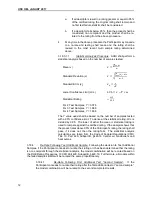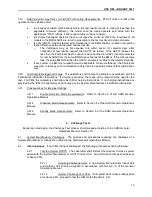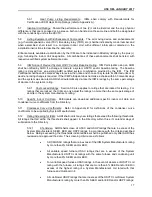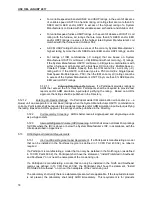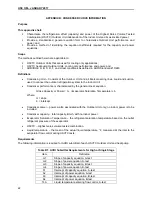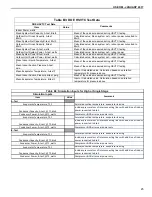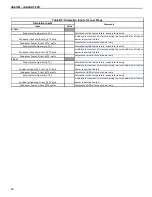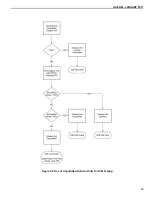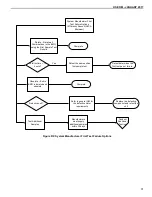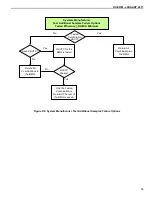
USE OM
– JANUARY 2017
23
For two-stage systems, a set of capacity and power coefficients as well as liquid temperature are required
at each operational stage. One (1) set of coefficients, shown above, is required at each capacity level at
the A and B test conditions. Low stage requires reporting at B and F conditions. Older systems may be
grandfathered using A and B similar to High Stage.
Table B2: AHRI Submittal Requirements for Low Stage
Item
Definition
m1
Slope of capacity equation, B-test
m2
Slope of power equation, B-test
m3
Slope of capacity equation, F-test
m4
Slope of power equation, F-test
b1
Intercept of capacity equation, B-test
b2
Intercept of power equation, B-test
b3
Intercept of capacity equation, F-test
b4
Intercept of power equation, F-test
TL B
Liquid temperature entering flow control, B-test
Guidelines to Determine Coefficients
Figure B1 provides an overview of the process to determine the equation coefficients. Tables B1, B2, B3,
B4 and B5 provide a tabular form of the information required to determine the coefficients. As noted on
these Tables, information is required from the HSVTC tests and simulation of the HSVTC system at different
evaporating temperatures.
Rules governing coefficient determination:
1. Simulations are run in the range of 40-52°F evaporator temperatures.
2. Simulations shall take into account the pressure drops associated with the liquid and suction
interconnecting lines.
3. Simulated evaporator superheat is to remain a constant value in the case of HSVTC systems
utilizing an expansion valve. For fixed orifice, capillary tubes, or other fixed flow control devices,
the superheat shall remain at a constant value for all A-test simulations and remain constant for all
B-test simulations. The A-test and B-test superheat are not required to be the same superheat
value.
4. Indoor airflow changes, suggested range of ±20-25%, can be used to simulate different evaporator
temperatures.
5. Corrections to the simulated values are required so that the performance and power curves pass
through the actual mean HSVTC test points. This is accomplished through changes in the intercept
values (b1…b4). Reference Figures B2 and B3.
Condenser Curve Check
If condenser curves are found on a quarterly audit to be outside of a ±10% tolerance with tested data, then
AHRI shall notify the Participant of those coefficients out of tolerance. AHRI shall send
Participants’ data
at least seven (7) days before meeting to review condenser curve results. Participants shall investigate
those coefficients out of tolerance, and have 30 days to make the appropriate corrections or provide
evidence to validate their curve. If Participants do not make the corrections and respond to AHRI within 30
days, AHRI shall hide the invalid BMGs in the Directory until corrected.




